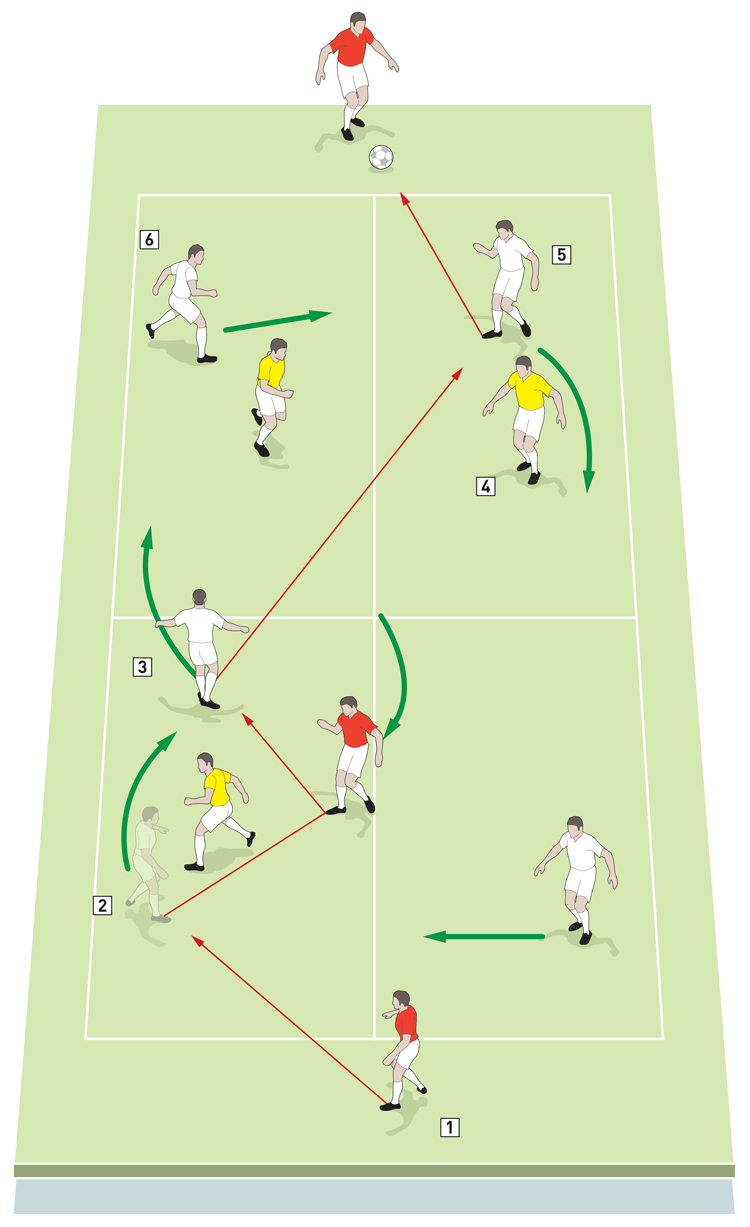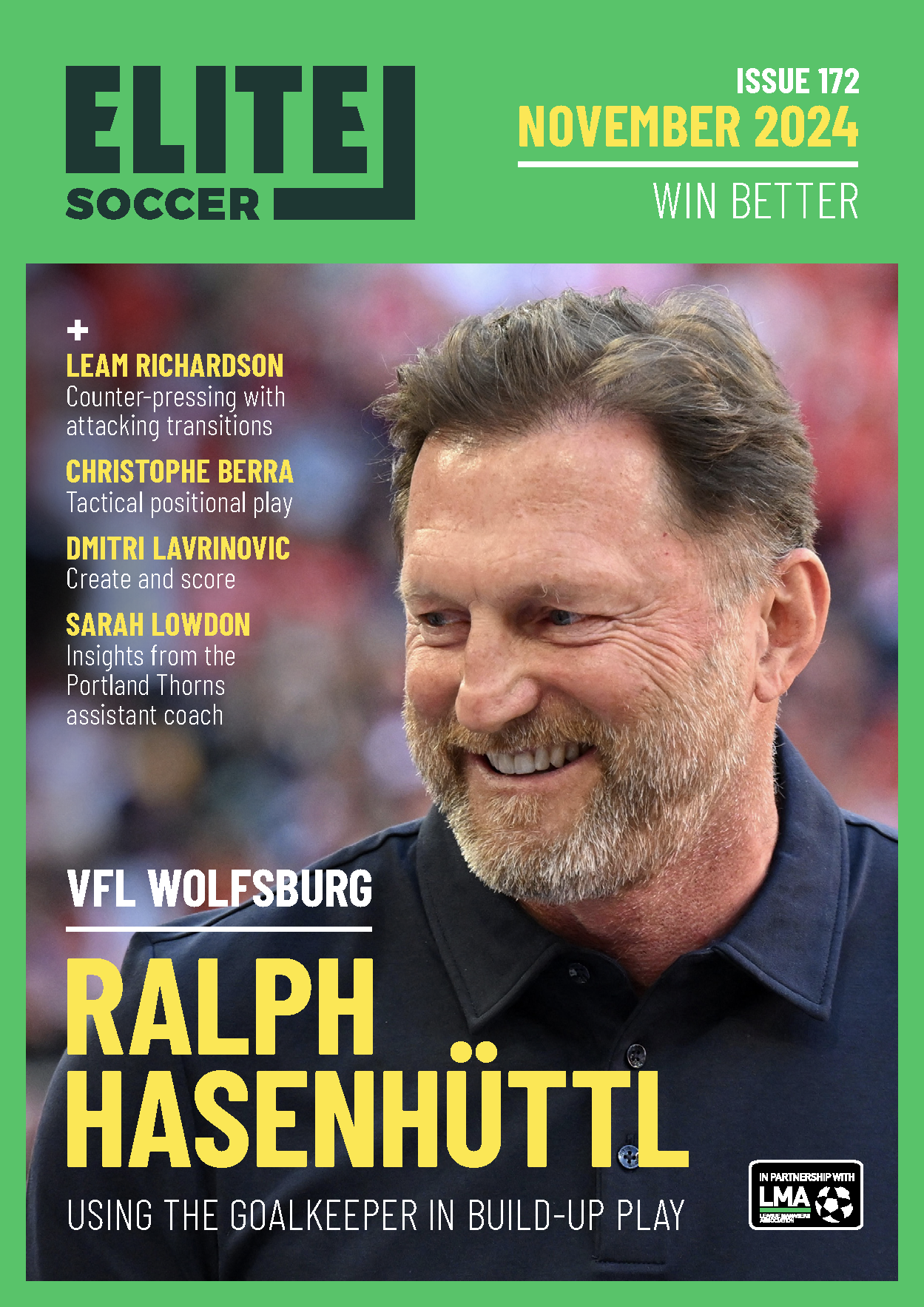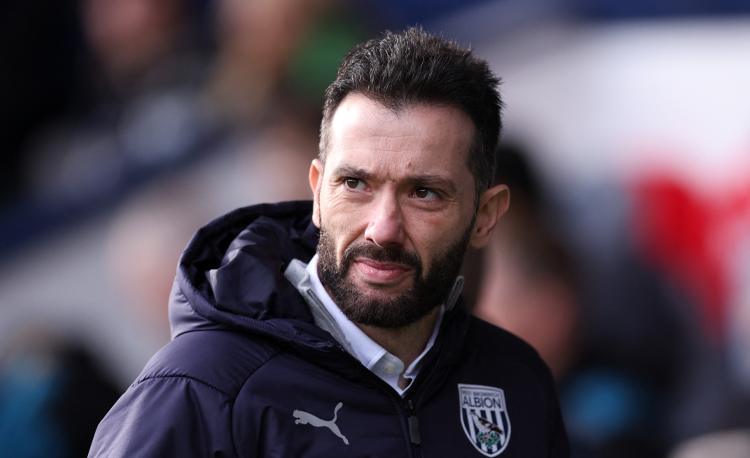You are viewing 1 of your 1 free articles
Accomplished possession and overloads
The session focuses on creating overloads in central areas. It explores the variety of options available for us to ‘own’ this key area, and puts the emphasis on player awareness in possession to make maximum use of what’s in front of them.
| Area | Use of a half-pitch + 10yds |
| Equipment | Balls, cones, goals |
| No. of Players | Up to 11v10 |
| Session Time | 1v1 possession 20mins, 4v3 overloads 20mins, Game 20mins |
The session focuses on creating overloads in central areas. It explores the variety of options available for us to ‘own’ this key area, and puts the emphasis on player awareness in possession to make maximum use of what’s in front of them.
There are two things that make this session unique and engaging. Firstly, the speed of play that it provokes, then the number of repetitions it provokes within a decision-making environment. This is why the session, coupled with good playing out of a number of goalscoring situations, is something we will come back to time and again, as at every turn it adds to an understanding of our style of play.
In terms of the national team, we will run the session most times we meet up as a squad, mainly so that we can reinforce shape amongst players who do not play together week-in, week-out.
The session is also flexible enough so that we may tweak it depending on the opposition, but in any instance it stands alone as a challenging practice that the players enjoy.
What do I get the players to do?
1v1 possession rotation
We begin with a possession rotation set-up, as shown (1). The aim here is simply for one of the infield teams to link with reds and play end to end. They can create overloads in any of the four boxes by using the floating red but must remain in their designated boxes at all times.
1

2. Whites are the active team and here the left-sided player links with the floating red
3. A quick one-two puts him clear of his yellow marker
4. The yellow defender fails to get tight enough on his man
5. The receiving white completes the passing pattern by finding the target red at the top
6. After the passing pattern has been successful the whites rotate around the grid
What we are looking to do here is get a spare player turned to play through, despite the tight spaces that are being worked in.
If the defending team wins the ball they must clear the ball to anywhere outside the area. This is then the cue for them to become the attacking team.
As an easy progression, attacking players must clear the box they are in after they play a pass.
What are the key things to look out for?
Technically, this is all about quick passing in tight areas. Players must be comfortable shielding the ball, playing with their heads up in order to look for the spare man, and making firm, decisive passes.
Tactically, we need players to learn when to rotate, and how to clear space with unselfish running. Concentration is a must, and we want them to quickly build an understanding of the theme. This will come about through good communication.
4v3 overloads in midfield areas (2)
2

2. A pass is made into the main area
3. Attackers are encouraged to move in to prompt overloads
4. It’s 2v1 in the defensive zone to offer the best chance of the ball making it out into the main playing area
We now step up the challenge to produce a situation that looks at overloads in midfield areas.
Bringing the ball out of defence – here, it’s the blues – defenders play 2v1 in the penalty area as a way of ensuring the ball makes it through to the halfway line. There are rules that need to followed though on each side - namely the attacking full-backs can only go into the opposition ‘half’ after successfully sparking combination play in the middle boxes; and as defenders, only three players are allowed in the central boxes, while attackers can move players in, either from defence or the wings, to prompt overloads in that key middle area of the pitch.
These combinations of overloads are important and should be practised. So, for instance, we will look to encourage both wide players to step in – one to act as a wide man (within the central area) and the other a typical no.10 who can sit behind the lone attacker ahead of him.
Alternatively, if the centre-half steps in, the instruction is for the midfielder to drop out of that section and move forward, so that there is a clear 2v1 in the advanced middle section of the pitch (3). The defenders then defend from that advanced line (leaving 1v1 in the penalty area behind him).
If the other team wins the ball they can have one only counter-attacking opportunity before the phase of play is restarted with the blue keeper.
3

2. This rehearsed move prompts the midfielder to drop out of that section and push forward
3. Supporting players move in to improve the effectiveness of the overload
What are the key things to look out for?
Again, we are looking for the ability to drag opposition players out of their slots in order to play angled passing or set up dribbling opportunities.
Once we begin achieving success with this set-up, we will look at improving speed of play so that we are advancing positively and quickly. However, as a word of caution, players sometimes may try to force the play when it is not on to do so. We encourage patience in possession until the opportunity is on to play through.
How do I progress the session?
We would progress this session into an 11v10 session on a full-sized pitch with the focus on the attacking team and the principles worked on. The one player overload should ensure control of the game to enable the attacking principles to be perfected.
Related Files
Editor's Picks
Using the goalkeeper in build-up play
Pressing principles
Intensive boxes drill with goals
Penetrating the final third
Creating and finishing
My philosophy
Pressing initiation
Compact team movement
Defensive organisation
Coaches' Testimonials

Alan Pardew

Arsène Wenger

Brendan Rodgers

Carlos Carvalhal

José Mourinho

Jürgen Klopp

Pep Guardiola

Roy Hodgson

Sir Alex Ferguson

Steven Gerrard
Coaches' Testimonials

Gerald Kearney, Downtown Las Vegas Soccer Club

Paul Butler, Florida, USA

Rick Shields, Springboro, USA

Tony Green, Pierrefonds Titans, Quebec, Canada
Join the world's leading coaches and managers and discover for yourself one of the best kept secrets in coaching. No other training tool on the planet is written or read by the calibre of names you’ll find in Elite Soccer.
In a recent survey 92% of subscribers said Elite Soccer makes them more confident, 89% said it makes them a more effective coach and 91% said it makes them more inspired.
Get Monthly Inspiration
All the latest techniques and approaches
Since 2010 Elite Soccer has given subscribers exclusive insight into the training ground practices of the world’s best coaches. Published in partnership with the League Managers Association we have unparalleled access to the leading lights in the English leagues, as well as a host of international managers.
Elite Soccer exclusively features sessions written by the coaches themselves. There are no observed sessions and no sessions “in the style of”, just first-hand advice delivered direct to you from the coach.









